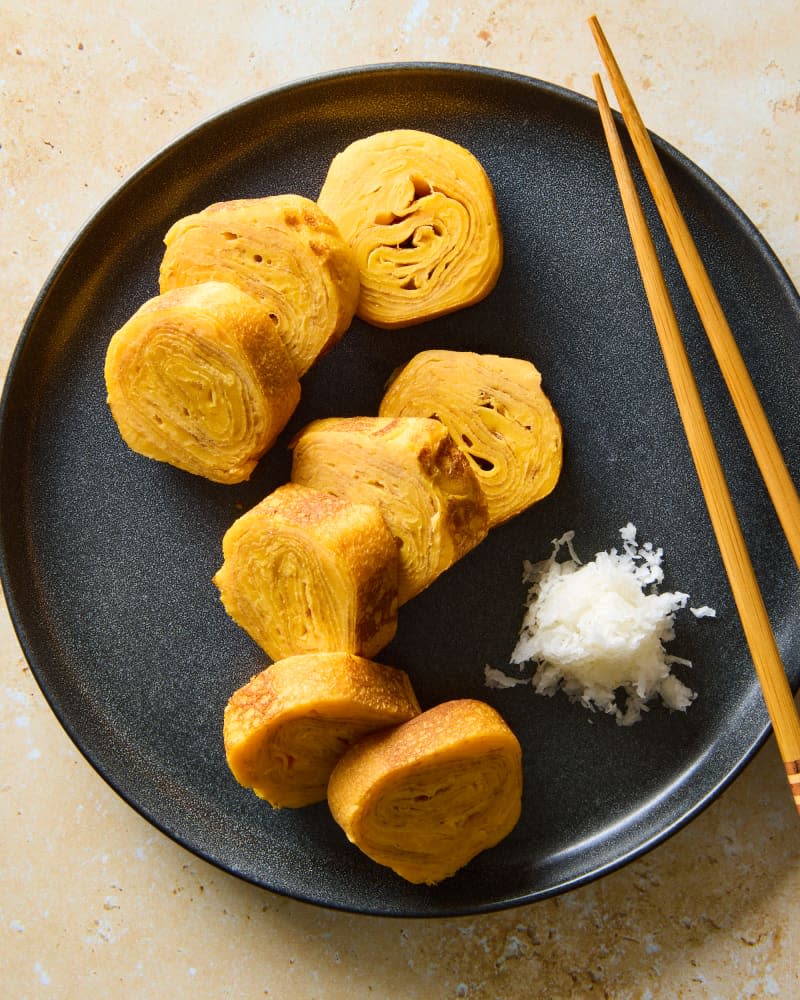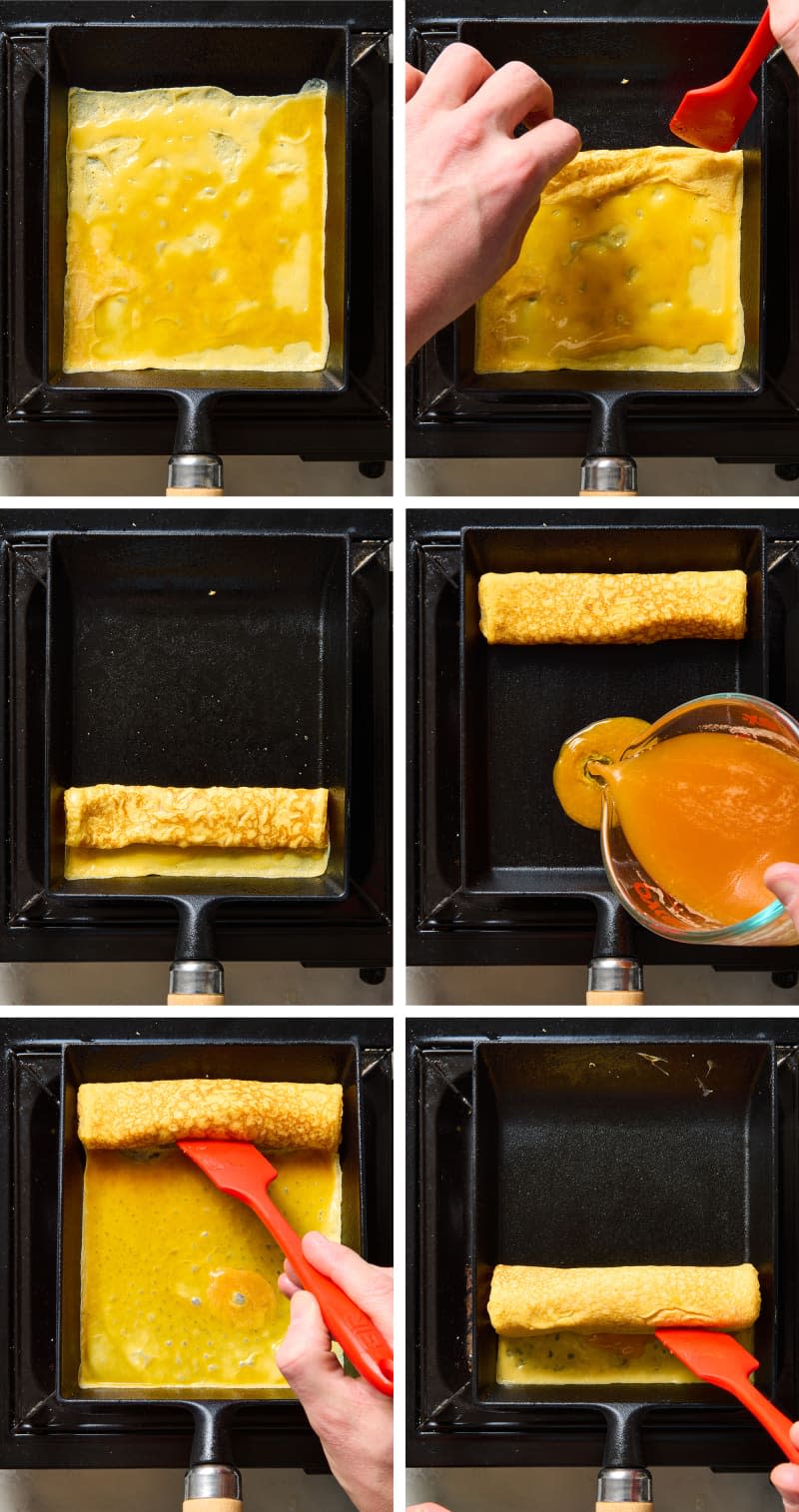The 5-Ingredient Japanese Egg Recipe I Make to Impress All My Friends

One of the most impressive dishes you can make with eggs is tamagoyaki, a Japanese rolled omelet made by repeatedly rolling thin layers of cooked eggs. It’s one of my favorite Japanese egg dishes to make (along with tamago kake gohan).
Unlike the similar Korean rolled omelet (geyran mari), which leans more savory and salty, and with different vegetables and fillings like scallions and seaweed, tamagoyaki draws sweet flavors from seasonings like mirin and sugar and keeps the focus on the pure flavor of the eggs.
When I visited Japan, tamagoyaki was my favorite item in my bento (or Japanese takeout meal). Having a bite of tamagoyaki with cooked rice while enjoying the beautiful scenery of Japan as I traveled by train was one of my top moments. Whenever I get nostalgic about my trip to Japan, I make this tamagoyaki and instantly get transported back to that happy memory.
Key Ingredients in Tamagoyaki
Eggs: The word “tamago” means egg in Japanese. My recipe for tamagoyaki calls for six eggs, which yields many layers, but you can use as little as three eggs if you don’t want to repeat the rolling process a lot.
Mirin (Japanese rice wine): Adds a punch of sweet and umami flavors.
Granulated sugar: A combination of mirin and sugar brings a well-rounded sweetness to the dish.
Hondashi: Hondashi is a powdered seasoning that turns water into dashi, a base stock used in Japanese home cooking. Traditionally, dashi is made with kombu (dried kelp) and katsuobushi (dried bonito flakes). Using a little bit of hondashi in the recipe cuts the need to make dashi from scratch.
Toasted sesame oil: A small drop of toasted sesame oil adds a beautiful, nutty flavor. You can skip this ingredient if you don’t have it.

How to Make Tamagoyaki
Make the egg mixture. Mix all the ingredients in a mixing bowl or a measuring cup.
Strain the egg mixture. Investing a few more minutes to strain the mix will keep the final result more consistent and homogeneous without any spots of egg whites. But if you’re in a pinch, you can skip this step.
Pour a thin layer of the egg mixture to cook. Pour just enough to cover the pan. You don’t need a lot because you don’t want your first rolled layer to be too thick.
Roll it up and repeat the process. Using two spatulas (or chopsticks), carefully roll the egg layer when it’s about 80% cooked. Whether you are using a square pan or a nonstick pan, try your hardest to keep the shape.
Let it cool, slice, and serve. Don’t cut your finished result as soon as it’s done. Letting it cool is a great way to shape up your tamagoyaki and keep the layers firm.
If You’re Making Tamagoyaki, a Couple Tips
Don’t pour too much egg per layer. You just need enough to cover the pan in a thin layer. It’s better to have more thin layers than fewer thick ones at the end.
Practice makes perfect. If you love the taste of tamagoyaki, but don’t feel confident rolling the egg layers, you’re not alone! Just believe in the process and keep practicing. After all, the eggs are seasoned — even if the final one doesn’t have quite as many layers, each bite will still be delicious.
Tamagoyaki Recipe (Japanese Rolled Omelet)
This slightly sweet Japanese rolled omelet is the perfect side for rice.
Prep time 5 minutes
Cook time 20 minutes
Serves 2
Ingredients
6 large eggs
1 tablespoon mirin
1 teaspoon granulated sugar
1/2 teaspoon kosher salt
1/2 teaspoon hondashi (powdered bonito stock or dashi base)
1/2 teaspoon toasted sesame oil
Cooking spray or 1 teaspoon neutral oil, such as canola or vegetable
Instructions
Place 6 large eggs, 1 tablespoon mirin, 1 teaspoon granulated sugar, 1/2 teaspoon kosher salt, 1/2 teaspoon hondashi, and 1/2 teaspoon toasted sesame oil in a medium bowl. Whisk with chopsticks or a fork until no streaks of egg white remain.
Pour the mixture through a fine-mesh strainer into another bowl, swirling the strainer occasionally (this might take a few minutes). Discard the contents of the strainer.
Heat a tamagoyaki pan or medium nonstick pan over medium-low heat. Coat the pan with a thin layer of cooking spray or 1 teaspoon neutral oil. Pour a thin layer of the egg mixture into the pan (about 3 tablespoons), quickly tilting the pan so that the egg mixture covers the entire surface.
Cook until the egg mixture is almost set (about 80%), 3 to 4 minutes. Roll it up: Start at one short end of the tamagoyaki pan furthest away from you, and, using chopsticks or two flexible spatulas, roll it down on itself toward you. Slide the rolled omelet to the top of the tamagoyaki pan. (For a round pan, just roll up from one side to the other.)
Pour another thin layer of egg mixture into the pan, lifting the already-rolled portion up to let the mixture flow underneath. Repeat cooking and rolling until you use up the egg mixture (5 to 6 batches).
Transfer the omelet seam-side down to a cutting board. Let cool for 5 minutes. Cut crosswise into 1/2-inch or 1-inch-wide pieces.
Recipe Notes
Storage: Leftovers can be refrigerated in an airtight container for up to 3 days, or frozen for up to 2 weeks. Thaw overnight in the refrigerator. Microwave until warmed through.

